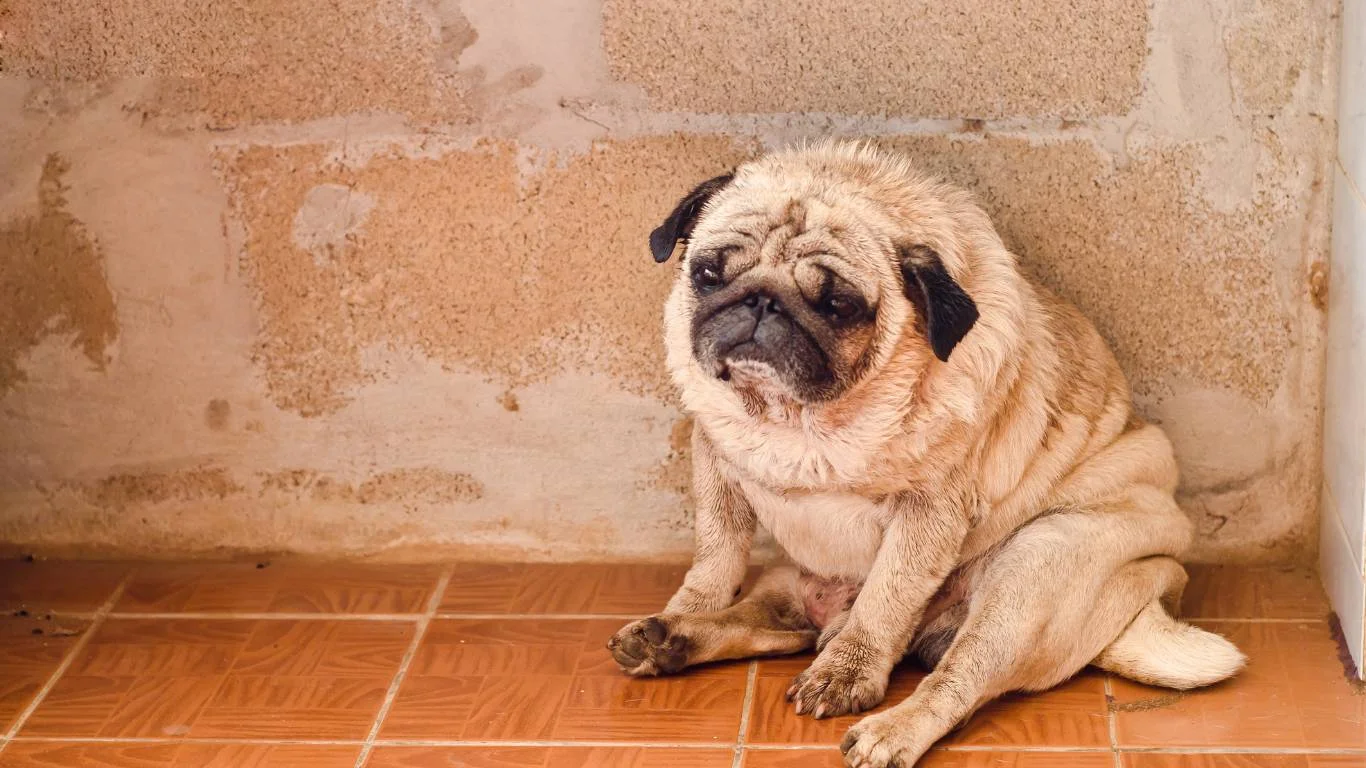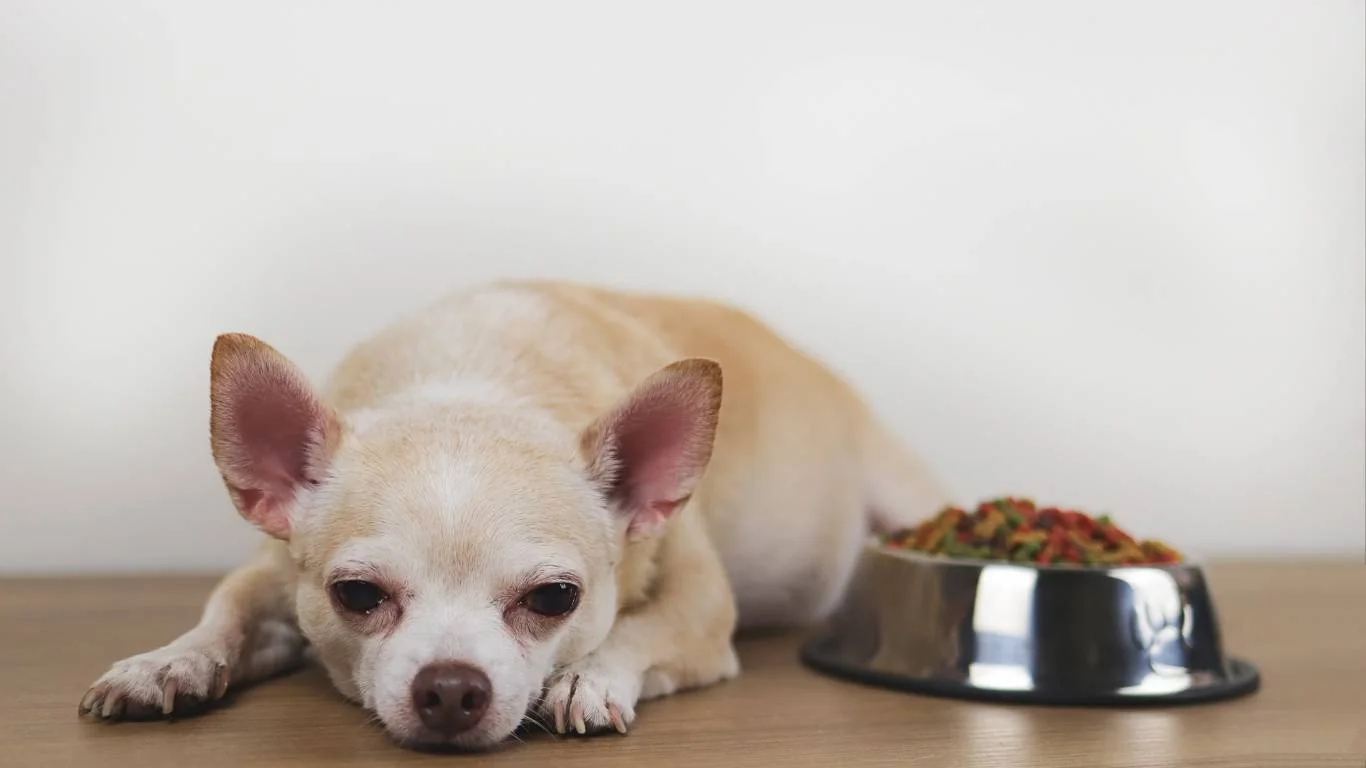Best Food for Dogs with Urinary Issues That Actually Works
If your pup has ever been diagnosed with a urinary issue—be it crystals, stones, or frequent infections—you know just how important diet becomes. From my own experience working as a Veterinary Assistant with a focus on nutrition, I’ve seen how powerful the right food can be. Finding the best food for dogs with urinary issues isn’t always as simple as grabbing a bag labeled “urinary care” off the shelf. There’s a lot more to it, and trust me, a little knowledge goes a long way when it comes to keeping your dog comfy and crystal-free.
Understanding Why Urinary Health Matters in Dogs

When I first started working in the vet clinic, I thought urinary problems were rare—until I realized how many dogs come in for symptoms like straining to pee, blood in the urine, or frequent accidents. And it’s not just older dogs; young, seemingly healthy ones are at risk too. Often, these problems come down to mineral imbalances, poor hydration, or genetics.
In many of those cases, switching up the food made a massive difference. With a nutrition-first approach, we were often able to reduce symptoms dramatically—or even avoid medications altogether. That’s why I always tell pet parents: don’t underestimate what a bowl of the right kibble or wet food can do!
What Causes Urinary Issues in Dogs?

Before diving into food recommendations, let’s look at what’s going on inside your dog’s body. Urinary problems can be caused by a variety of factors, including:
- Dehydration: Not drinking enough water leads to concentrated urine, which is a breeding ground for crystals and bacteria.
- pH Imbalances: Certain foods can make the urine too acidic or too alkaline, which promotes stone formation.
- Excess minerals: Diets high in calcium, magnesium, or phosphorus can cause struvite or calcium oxalate stones.
- Infections: UTIs can contribute to inflammation and stone formation, especially in female dogs.
One case I remember vividly was a sweet little Dachshund named Bella. She kept getting bladder infections, and her owner was at their wit’s end. After reviewing her diet, we realized her food was packed with fillers and had no urinary health benefits. Once we transitioned her to a more appropriate diet, she didn’t have a single flare-up for months. Total game-changer.
Key Nutritional Goals for Dogs with Urinary Issues

When we’re talking about the best food for dogs with urinary issues, it’s not just about avoiding certain ingredients—it’s also about what to include. The right formula can support urinary health in some seriously effective ways.
1. Encourage More Hydration
This one seems obvious, but it’s often overlooked. Many commercial dog foods are dry, which doesn’t help a pup that already struggles to drink enough water. If you can, add in wet food or even try a hydration topper like bone broth (just make sure it’s low sodium and dog-safe!).
2. Balance the pH Levels
Certain ingredients can help maintain a healthy urine pH. Look for formulas that are specifically designed to promote a neutral to slightly acidic pH, which discourages the formation of struvite and oxalate crystals.
3. Limit Excess Minerals
This is a big one. Foods with too much calcium, phosphorus, and magnesium can create the perfect storm for stone formation. Brands that formulate urinary care diets are usually on top of this, but always check the label—or better yet, ask your vet or vet assistant (hey, that’s where I come in!)
4. Go Low on Sodium
Too much salt can actually increase water retention and put extra pressure on the kidneys and urinary system. Look for low-sodium options, especially in prescription-style diets.
5. Include Targeted Supplements
Some foods are boosted with extras like cranberry extract, DL-methionine (which acidifies urine), or omega-3s for reducing inflammation. These can really help manage chronic issues, though results can vary from dog to dog.
In the next section, I’ll go over specific dog food brands and homemade options I’ve seen make a real difference—especially in dogs like Bella, Max (a Pug with stubborn crystals), and even my own foster pup, Milo. There’s no one-size-fits-all, but there are definitely some standouts that make my personal recommendation list.
Top Recommended Commercial Foods for Dogs with Urinary Issues

Okay, so let’s talk actual food options. I’ve helped dozens of pet parents navigate the overwhelming sea of dog food choices, and when it comes to the best food for dogs with urinary issues, not all brands are created equal. There are some standouts I’ve consistently seen do wonders for pups struggling with crystals, stones, or chronic UTIs.
Hill’s Prescription Diet c/d Multicare
This one’s a clinic favorite—and for good reason. Hill’s has poured a ton of research into this formula, and I’ve personally seen it dissolve struvite stones without needing surgery. It’s formulated to maintain healthy urine pH and control mineral levels. Plus, dogs actually eat it (even picky ones like my foster pup Milo!).
Royal Canin Urinary SO
Another go-to in the vet world. Royal Canin’s Urinary SO line helps prevent both struvite and calcium oxalate stones. One of my regular clients had a French Bulldog who was getting crystals every few months, and once we switched him to this, they pretty much disappeared. It’s available in dry and wet versions too, which is perfect for encouraging hydration.
Purina Pro Plan Veterinary Diets UR
Purina’s UR formula is solid—especially if your dog needs a urinary diet but also has sensitive digestion. It’s not quite as popular as the others, but I’ve seen it work well in cases where dogs didn’t tolerate the bigger-name brands. It’s also typically a little more budget-friendly, which is a nice bonus for multi-dog households.
Important note: These prescription diets usually require vet approval. That might seem like a hassle, but it’s part of making sure your dog is getting the exact nutrients they need—no more, no less. Always chat with your vet before switching to one of these.
Non-Prescription Alternatives That Can Help

Not every dog needs a prescription formula, and some pups do great on carefully selected over-the-counter foods. If your dog has mild urinary issues or you’re looking for long-term prevention, these options might work without needing a vet Rx.
1. Blue Buffalo Natural Veterinary Diet WU
This one blurs the line between prescription and non-prescription—it’s formulated for weight management and urinary health. What I like is that it’s low in magnesium and includes cranberries for extra bladder support. Plus, it’s grain-free if that’s a concern for your dog.
2. Solid Gold Holistique Blendz
This one’s not marketed as a urinary diet specifically, but I’ve seen it help dogs who needed a gentler, lower-protein food that didn’t spike their urine pH. It’s holistic, full of fiber, and includes ocean fish as the main protein source—which is naturally lower in purines and minerals.
3. Wellness CORE Grain-Free Reduced Fat
It’s high-protein but balanced with lower fat and includes ingredients like flaxseed and cranberries. I’ve had success with this in dogs prone to mild infections or inflammation who didn’t need a full prescription diet but needed some bladder support built in.
Just keep in mind: while these options are more accessible, they’re not as tightly controlled in terms of mineral content as prescription diets. If your dog has had stones or more serious urinary issues, don’t skip the vet conversation first.
Homemade Diets: Caution + Customization

Lots of dog parents ask me about cooking for their dogs at home. It’s honestly a lovely idea and can be super effective—but only if done right. The thing is, urinary health diets are all about balance, especially when it comes to things like calcium, phosphorus, magnesium, and urine pH. A DIY approach without proper guidance can actually make things worse.
That said, I’ve helped a few clients create homemade diets with the help of a veterinary nutritionist. Here’s what that usually involves:
- Working with a vet to get a detailed urinalysis and bloodwork panel.
- Consulting a board-certified veterinary nutritionist (yep, they exist!).
- Following a recipe that’s been balanced specifically for your dog’s needs.
- Including ingredients like lean proteins (think turkey or white fish), moisture-rich veggies, and possibly acidifiers like methionine or certain supplements.
One of my favorite success stories was a senior Beagle named Jasper. He had recurring stones and wasn’t tolerating any commercial food well. His pet parent was super hands-on and, with the vet’s help, made a home-cooked diet that kept Jasper stone-free for over a year. It took effort, but wow—it was worth it.
So, while homemade diets are not a quick fix, they *can* be a great long-term solution for some dogs—especially if you’ve hit a wall with commercial diets.
Daily Tips to Support Urinary Health Through Diet

Alright, so now that we’ve covered commercial options, homemade diets, and what to look for—let’s talk about some everyday strategies. These are the little habits I encourage dog parents to build into their routine, especially when their pup is prone to urinary flare-ups. And honestly? They’re not hard, but they do make a big difference over time.
1. Always Keep Fresh Water Available
This might sound like a no-brainer, but it’s the one thing that gets overlooked the most. I can’t tell you how many clients I’ve seen refill the water bowl *once a day*, and then wonder why their dog isn’t drinking. Try switching to a pet water fountain—the movement encourages more sipping. I’ve had picky drinkers suddenly turn into hydration champs just because they liked the sound of running water.
2. Add Moisture to Meals
Even if you feed dry kibble, you can boost moisture in a super simple way—just add warm water or a bit of low-sodium bone broth. Some of my older canine patients, especially those on dry prescription diets, saw major improvements in urination frequency and comfort with this one small tweak.
3. Go Easy on High-Mineral Treats
Dental chews, bones, even some jerky-style snacks are packed with phosphorus or sodium. If your dog’s on a urinary diet, it kind of defeats the purpose if the treats are working against you. I recommend things like freeze-dried meat treats (single ingredient), or better yet—veggie slices like cucumbers or carrots. Bonus: they’re hydrating too.
4. Stick to One Food at a Time
I get it—it’s tempting to rotate foods or try the newest brand your neighbor swears by. But when it comes to managing urinary issues, consistency is key. Once you find something that works, stay the course. If you need to make a change, transition slowly and check in with your vet.
Real-Life Case Study: From Frequent UTIs to Urinary Harmony

Let me tell you about Rosie—a Cavalier King Charles Spaniel who came into the clinic every few months with a UTI. Her poor pet mom was so frustrated, and honestly, I don’t blame her. Rosie was on a “premium” grain-free diet, but when we dug into the ingredients, it was high in legumes and phosphorus, which wasn’t helping.
We switched Rosie to a prescription urinary diet, added wet food to her meals for hydration, and made a plan to include monthly urinalysis checks. Within three months, the infections stopped. She’s been stable for almost a year now. I saw her just last week for a wellness visit and she looked *amazing*—healthy coat, bright eyes, and most importantly, no bladder discomfort.
It’s stories like Rosie’s that remind me how critical it is to match nutrition with medical needs. Food isn’t just fuel—it’s medicine in a bowl when you do it right.
When to See Your Vet (Again)
I can’t stress this enough: if your dog shows any of the following symptoms, don’t just change their food and hope for the best. These can be signs of serious urinary problems:
- Straining to urinate
- Blood in the urine
- Frequent urination or accidents
- Licking the urinary opening
- Lethargy or restlessness
In the clinic, we often did urine tests, bloodwork, and even x-rays to rule out stones or infections. Catching issues early means less discomfort for your pup—and often, less money spent in the long run. Trust your gut. If something seems off, reach out to your vet or vet assistant (yep, like me!).
Final Thoughts on Choosing the Best Food for Dogs with Urinary Issues
To wrap it all up, the best food for dogs with urinary issues is one that meets your dog’s specific needs—based on their medical history, age, activity level, and how well they stay hydrated. Whether it’s prescription food, a carefully chosen OTC brand, or a vet-guided homemade meal, the goal is simple: support bladder function, reduce stone formation, and keep your dog feeling their absolute best.
My advice? Don’t do it alone. Partner with your vet, ask questions, and don’t be afraid to tweak things until you find that sweet spot. Your pup will thank you—with fewer vet visits and a whole lot more tail wags.
References
- https://vcahospitals.com/
- https://www.avma.org/
- https://www.royalcanin.com/
- https://www.hillspet.com/
- https://www.purinaproplanvet.com/
Disclaimer
This article is for informational purposes only and should not be considered veterinary advice. Always consult with your veterinarian before making dietary changes for your pet, especially if your dog has been diagnosed with a urinary condition.






